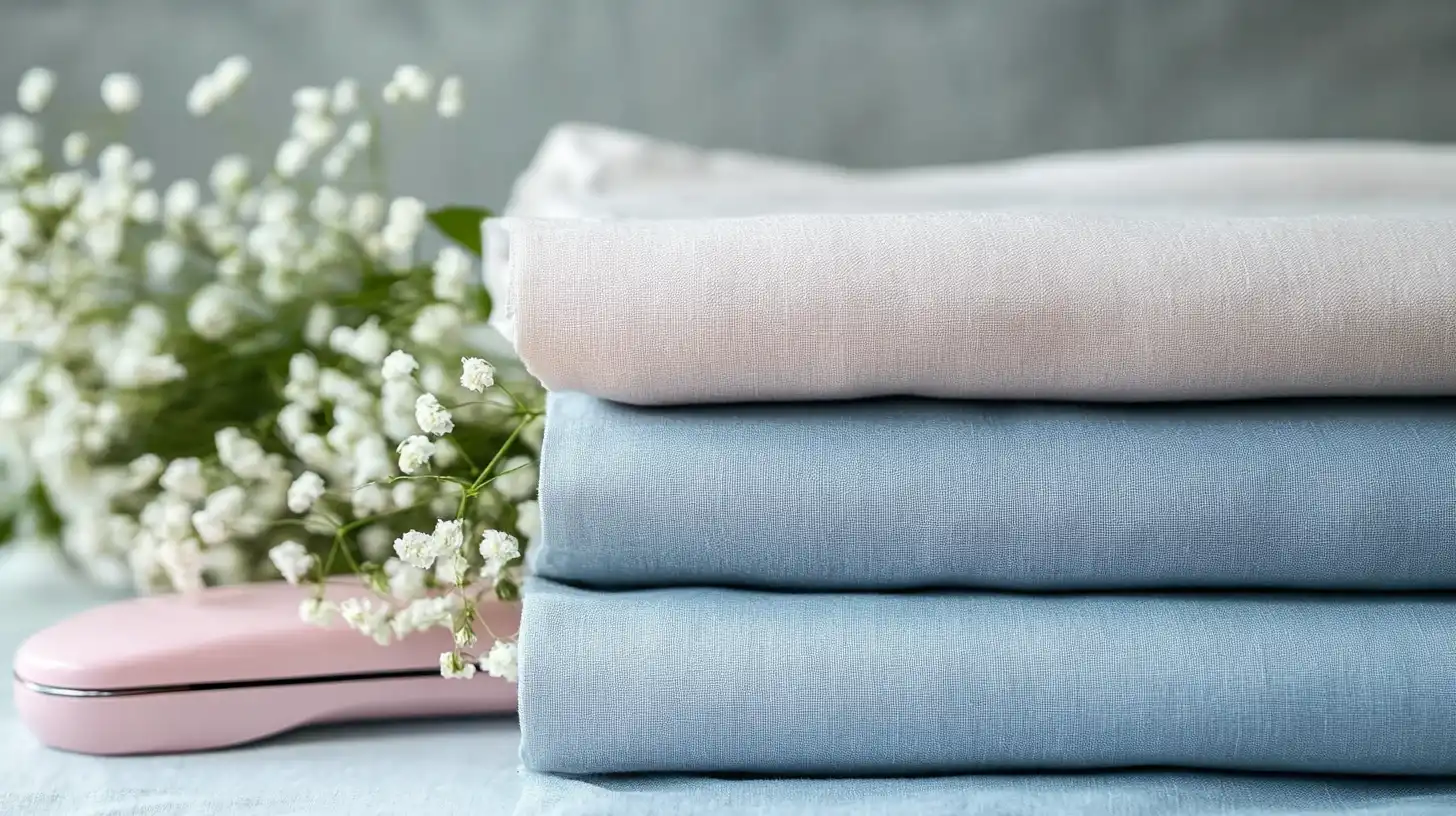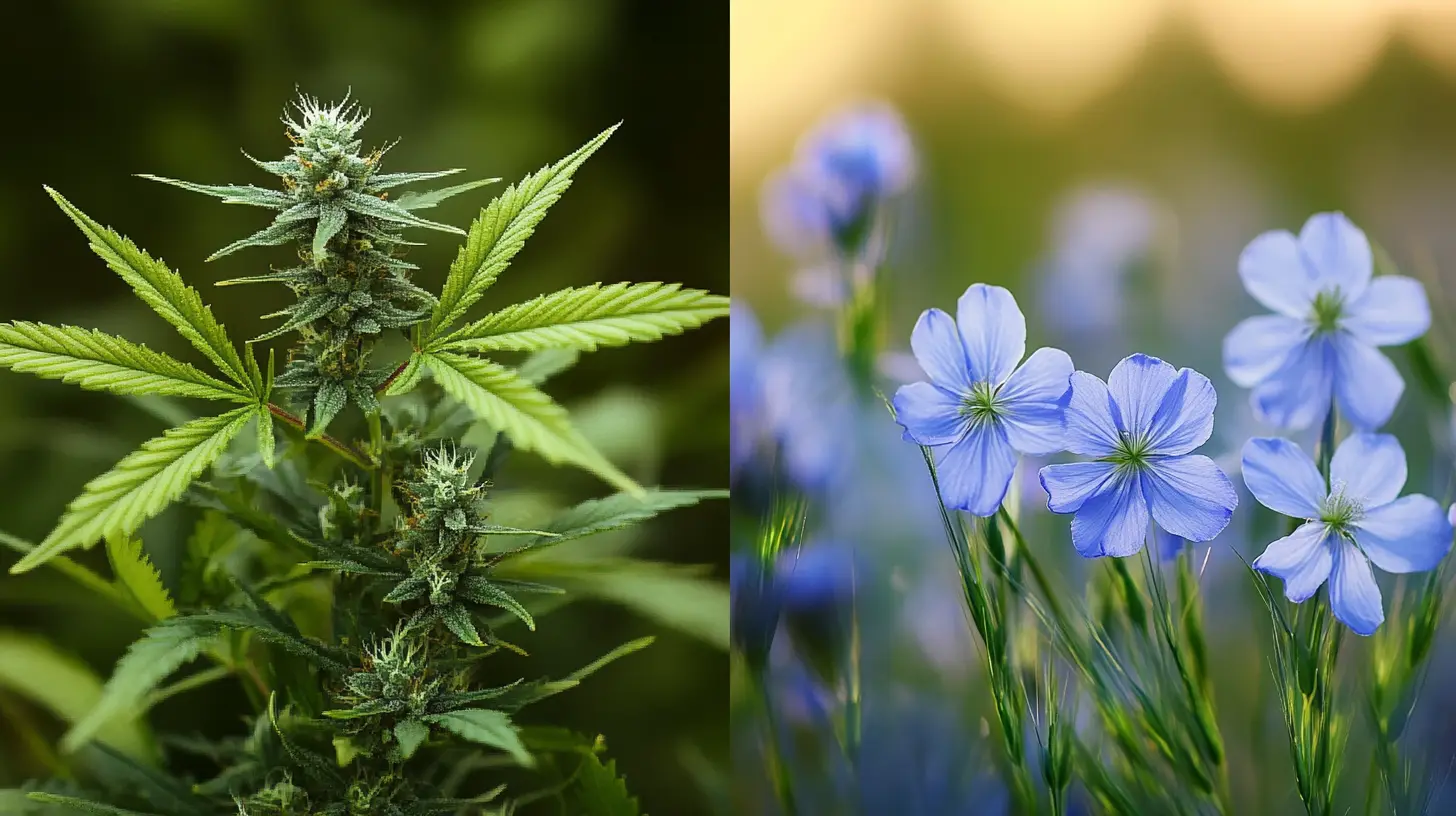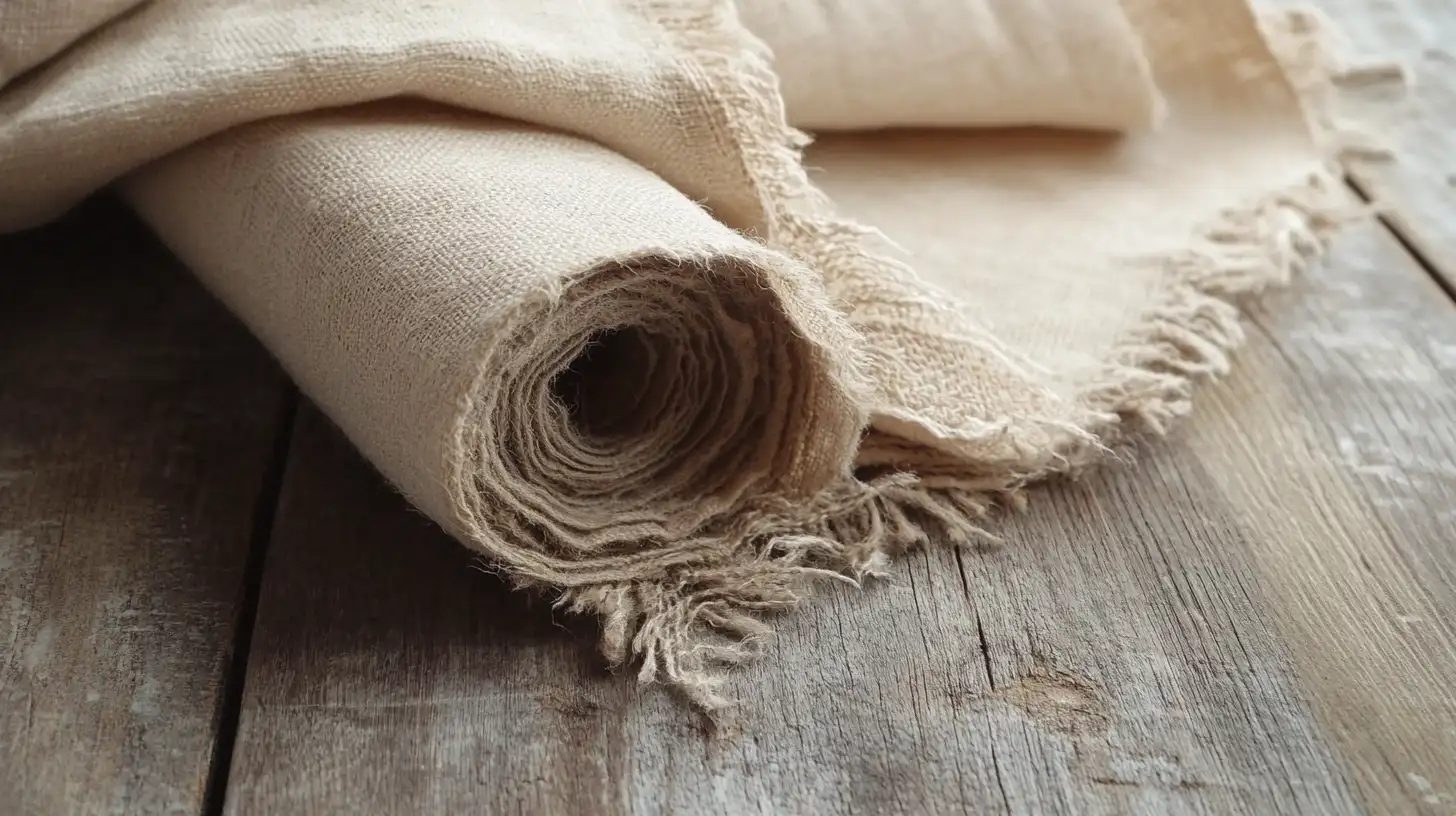When deciding between linen and hemp, it's essential to weigh their distinct characteristics and benefits. Linen, made from flax, offers breathability and a crisp texture. It's perfect for warm climates.
Meanwhile, hemp stands out with its superior strength, UV resistance, and minimal resource requirements. These make it a sustainable choice for durable clothing.
So, how do you choose which is suitable for your needs? Let's explore their histories, physical properties, and environmental impacts to help you make an informed decision!
Key Takeaways
- Hemp is significantly stronger and more durable than linen. It's suitable for heavy-duty applications.
- Linen offers superior breathability and moisture-wicking properties. It's ideal for hot weather clothing.
- Hemp has a lower environmental impact. It requires less water and fewer pesticides compared to linen.
- Linen tends to wrinkle easily but gets softer with washing, enhancing comfort over time.
Common Traits of Linen and Hemp
Linen and hemp are both known for their unique qualities. Here are some common traits:
- Breathability: Both fabrics allow air to circulate, making them perfect for warm weather.
- Durability: Linen and hemp are strong fibers that withstand wear and tear. They often become softer with each wash.
- Environmentally Friendly: They need minimal pesticides and water to grow, making them sustainable choices.
- Moisture-Wicking: These materials absorb moisture quickly and dry fast, keeping you comfortable.
- Antibacterial: The antibacterial properties make them resistant to moths, fungus, mold, and mildew.
- Biodegradable: Linen and hemp are fully biodegradable, reducing their environmental impact.
These characteristics make linen and hemp excellent choices.
Linen Vs Hemp: History and Origin

You'll find rich, ancient roots when you explore the history of linen and hemp.
Linen
Linen has a rich history stretching back to ancient Egypt, around 5000 BC. The Egyptians highly cherished it and used it in mummification and as a symbol of purity.
Over the centuries, linen production spread across Europe, gaining popularity for its strength and coolness. The 19th century saw a leap in availability due to industrial weaving processes.
Even today, thanks to its comfort and practical benefits, you'll appreciate linen's enduring qualities in fashion and home textiles,
Hemp
Hemp, cultivated as far back as ancient China, around 8000 BC, has always been prized for its robust versatility in textiles, rope, and paper.
Unlike linen, hemp cultivation spread globally. Because of its numerous applications, hemp was integrated into European and Asian cultures.
Industrial hemp, bred for low THC levels, is non-psychoactive and suitable for various uses. From creating durable fabrics to contributing to soil regeneration, hemp's long history highlights its immense value as an eco-friendly resource.
Linen Vs Hemp: Cultivation and Production

When considering cultivation and production, you'll notice distinct differences between linen and hemp.
Linen
Flax plants are the source of linen. These natural fibres thrive in cooler climates and need well-drained, nutrient-rich soil for optimal growth.
To produce linen fabric, you start by sowing flax seeds in early spring. After around 100 to 120 days, once the plants turn brown, you can harvest them. The flax fibers are then extracted, processed, and woven into various products, such as linen sheets.
But, compared to hemp, linen production demands more water and yields less fiber per acre. While not as productive as hemp, linen remains a timeless and luxurious material.
Hemp
Hemp fibers are derived from the outer stalks of the hemp plants Cannabis sativa plants. These plants make hemp longer and stronger than flax fibers.
One of hemp's key benefits is its natural resistance to pests. This means you won't need pesticides to grow it.
Additionally, hemp improves soil health with its deep-root systems. These systems can aerate and retain nutrients.
The rapid growth cycle of natural hemp allows for multiple harvests per year. With this feature, hemp further enhances its environmental advantages.
Linen Vs Hemp: Advantages and Disadvantages

When comparing linen and hemp, you'll find distinct advantages and disadvantages for each.
Linen
Linen is very breathable. This makes it perfect for hot climates as it helps regulate body temperature. Its durability ensures long-lasting wear and is ideal for home textiles and summer apparel. Over time, linen becomes softer, enhancing its comfort and appeal.
Environmentally, linen has a lower impact compared to cotton. It requires fewer herbicides and pesticides and less water. Its natural, crisp texture adds elegance to formal garments and home decor.
However, linen does wrinkle easily, which can be a drawback. Overall, linen is a strong contender in the fabric world.
Hemp
Hemp offers remarkable durability and eco-friendliness. It's an excellent choice for sustainable textiles.
Hemp is up to 8 times stronger than linen, ensuring longevity. Additionally, hemp is highly resistant to UV, reducing sun damage and fading over time.
While initially coarser, hemp softens with washing, enhancing comfort. Hemp is also a biodegradable material. It breaks down naturally, posing minimal environmental harm.
But hemp's initial coarseness might be a drawback if you prefer instant softness. Despite this, hemp is a compelling option for those committed to eco-conscious living.
Linen Vs Hemp: Common Uses

When considering common uses, both fabrics have their own unique applications.
Linen
Linen's natural luster and crisp texture make it popular for home textiles like tablecloths and bed sheets. This highly breathable fabric is also perfect for summer apparel. In high-end fashion, linen stands out for its elegance and comfort in warm weather.
Beyond clothing, linen's versatility extends to home decor. It's commonly used in curtains, upholstery, and cushions. Linen truly offers a blend of beauty and resilience.
Hemp
In fashion, designers use hemp fibers to create sustainable clothing and accessories. Beyond fashion, hemp can be processed into biodegradable plastics and used in automotive parts. Doing so promotes a sustainable alternative to traditional materials.
Construction also benefits from hempcrete. This is a bio-composite material that enhances building insulation.
Lastly, converting hemp into biofuels helps reduce reliance on fossil fuels. This further supports environmental sustainability.
Linen Vs Hemp: Environmental Impact
When considering the environmental impact, you'll notice differences between linen and hemp.
Linen
Despite its many benefits, linen cultivation impacts the environment significantly more than hemp. This is due to its higher water usage and soil nutrient depletion.
Flax plants need more water for growth. Additionally, flax quickly depletes soil nutrients, necessitating crop rotation every 4-5 years to maintain soil health.
While linen is biodegradable and compostable, non-organic linen often relies on pesticides. These chemical interventions can harm the ecosystem and reduce biodiversity.
Although linen has a lower CO2 absorption rate, it still contributes positively by absorbing around 3.7 tonnes of CO2 per hectare.
Hemp
Hemp cultivation has a lower environmental footprint. This is because it requires minimal water and has impressive CO2 absorption capabilities.
Hemp requires little water, only 30-40 cm per growing season. This makes it a highly water-efficient crop. Additionally, hemp cultivation aids in carbon sequestration. It can absorb around 15 tonnes of CO2 per hectare.
Hemp's deep root systems improve soil health by removing toxins and heavy metals. They also allow for continuous replanting without depleting soil nutrients.
With the potential for two harvests per year, hemp stands out as a sustainable choice.
Linen Vs Hemp: Economic Considerations
Linen production is labor-intensive and requires specific climatic conditions, making it more expensive. But its durability and luxury status can justify the higher price.
Conversely, hemp grows quickly in diverse climates with fewer pesticides, reducing cultivation costs. Its lower environmental impact makes it an appealing choice for eco-conscious consumers.
To sum up, while linen may hold a premium market position, hemp provides a more cost-effective option for widespread use.
Conclusion
When choosing between linen and hemp, consider your specific needs. If you want breathable, crisp fabrics for warm weather, go with linen. For something stronger and more durable, hemp's your best bet.
Both are eco-friendly, but hemp edges out with lower water and pesticide requirements. Ultimately, it depends on your priorities—comfort or longevity.
Evaluate their pros and cons, and you'll find the right fabric!
Learn more fabric knowledge on the Longan Craft Blog, and dive into the fabric world with Longancraft!
FAQs
Is Hemp Fabric Better Than Linen?
Yes, hemp fabric is better than linen. It's stronger, more durable, and eco-friendly. Hemp also softens quickly and resists UV damage better. Its versatility in various applications makes it a superior choice.
Is Hemp Bedding Better Than Linen?
Both hemp and linen have their advantages. The choice depends on your needs: durability and sustainability favor hemp, while comfort and breathability favor linen.
What Is the Difference Between Hemp and Linen Yarn?
Hemp yarn is stronger and more durable, with better UV resistance, while linen yarn is initially softer but softens more with washing. Hemp is more sustainable, needs less water and no pesticides, and enhances soil health.
What Are the Disadvantages of Hemp Fabric?
Hemp fabric can feel coarse initially, costs more, and is prone to wrinkling. It also lacks elasticity, which can lead to stretching. Additionally, color consistency may be an issue, making uniformity challenging for manufacturers.


0 comments